

Customer expectations today are sky-high, and simply collecting feedback isn’t enough. In fact, 73% of customers expect companies to understand their unique needs and expectations, yet too many customers still feel ignored.
Many companies pride themselves on building a customer feedback loop to find out customers’ pain points, but the real test is what happens next.
After you’ve made a change or have fixed an issue based on customer feedback, letting customers know of the update is crucial. In today’s competitive landscape, ignoring this step can be costly—nearly 49% of consumers have left a brand they were loyal to in the past year due to poor customer experiences.
Put simply: customers want to be heard and they want proof that their feedback matters. Closing the feedback loop delivers that proof—it’s more important than ever for building loyalty and trust.
If you want to know more about closing the customer feedback loop, then read on.
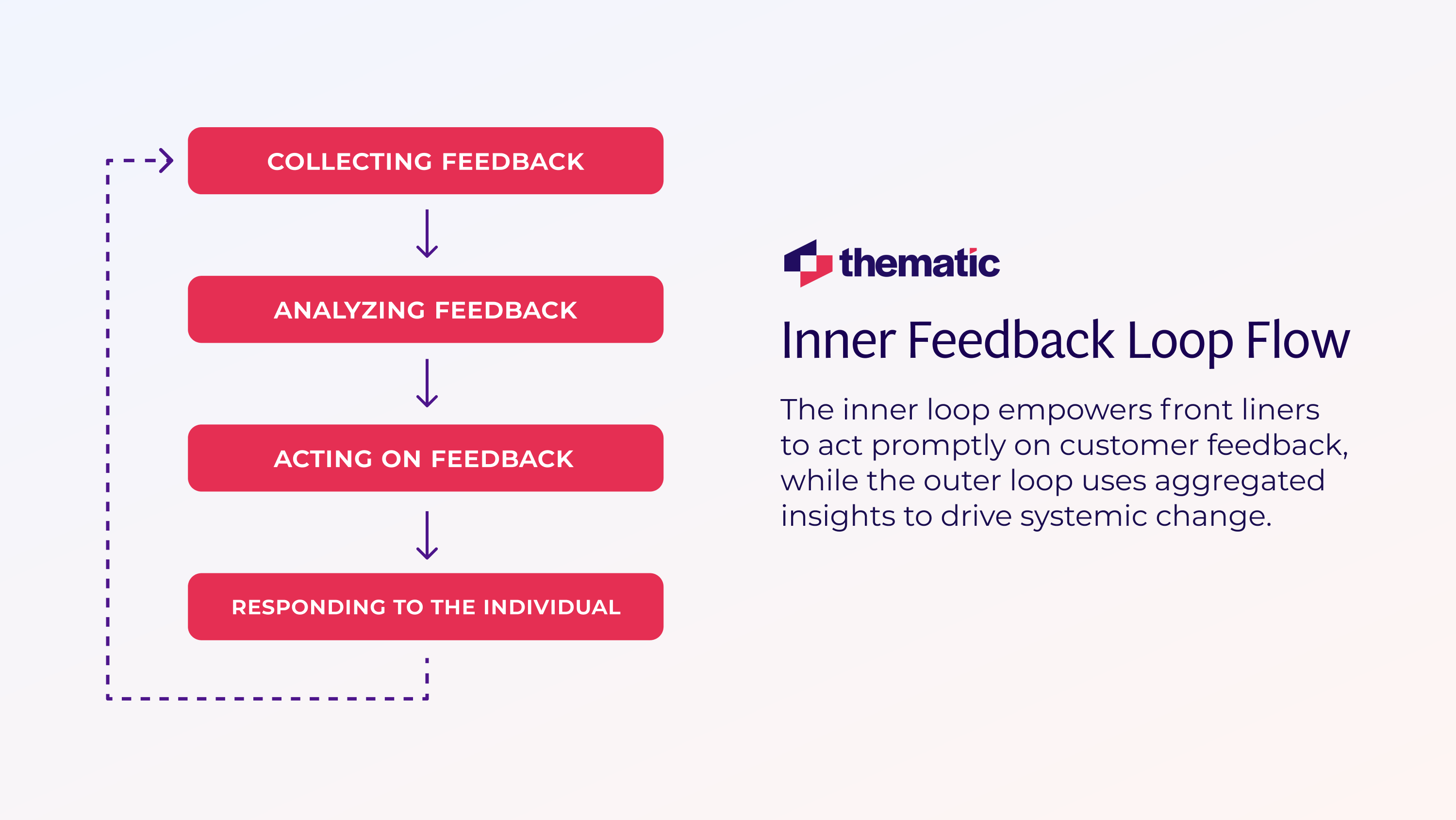
In essence, “closing the loop” refers to that final step of the customer feedback loop process—following up with customers after you’ve acted on their feedback.
It’s not enough to run a customer review analysis and implement changes based on the insights; you need to circle back and communicate with the customer about their feedback. Simply put, closing the customer feedback loop means communicating with customers about their feedback—meaning you connect with them about what they said and what you did in response, rather than just sending a generic “Thank you for your feedback” email.
Think of the feedback process as a complete cycle:
For example, if a user suggested a new app feature and you’ve now built it, closing the loop means reaching out to that user (and others who requested it) to say “You asked, we listened – here’s the new feature you wanted!”
This follow-up completes the feedback loop, reassuring the customer that their input was not only heard but also used.
Yes, it is a nice courtesy to tell customers that you have implemented a change based on their feedback. But more importantly, closing the feedback loop directly impacts customer satisfaction, loyalty, and your bottom line.
Here’s why it’s critical:
Customers want to be heard. In fact, 41% say brand loyalty is tied to an emotional connection. When people feel their voice led to real change, they’re more likely to:
Failing to follow up breaks trust. Atlassian learned this the hard way — overwhelmed by feedback, their teams couldn’t keep up, and customers felt ignored. That silence? It led to frustration and eroded loyalty.
Churn and retention are on the line.
Happy customers spend more.
It improves your NPS and survey engagement.
At Thematic, we’ve looked at churn data across all NPS scores and found that churn is present across all responses.
The graph on the left shows how churn correlates with the “likelihood to recommend” score on a scale from 0 to 10. On average this company's churn is at under 4%. The lower is the score the higher is the churn. In fact, those who give a score of 10 are half as likely to churn (3.5% vs. 7%).
The graph on the right shows how the actual number of churned customers accumulates across all scores. Only 25% of churned customers have a score of 2 or lower. An additional, 50% sit between the scores of 2 and 8. Turns out this company has many more Passives than Detractors.
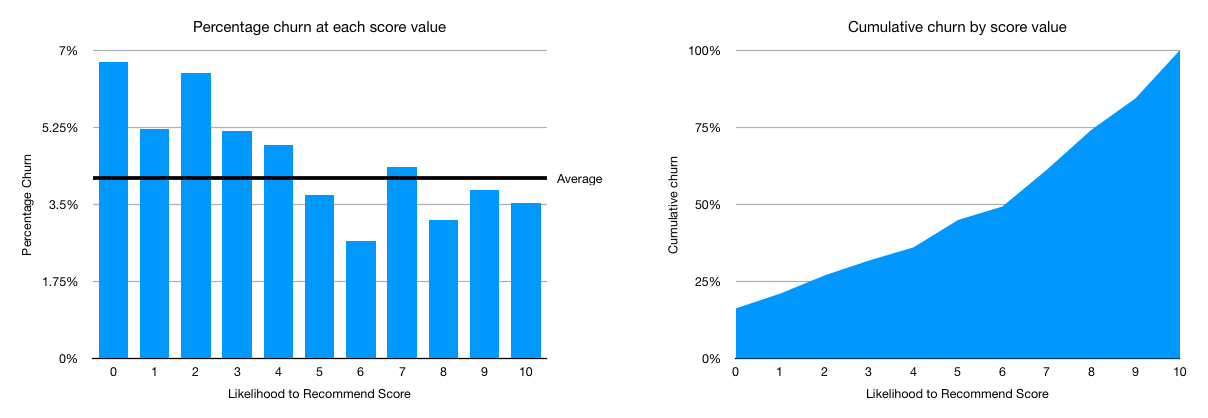
In summary, whilst the “Super Detractors” do tend to churn more, churn happens across all scores. So by following up with only most negative reviews, companies will ignore the bulk of customers who will churn.
Closing the loop meaningfully is important. Without it, companies are missing out on retaining key customers. There is also the case of attracting extra revenue through follow up, as we'll see in the following examples. Don’t worry, we understand that time to respond is limited and have come up with an automated way of closing the loop.
So, how can your organization actually close the loop in practice?
Below are several tactics, each illustrated with real-world style examples, to ensure customers know their feedback was heard and used. The key is to make follow-up a deliberate, structured part of your feedback process rather than an afterthought.
When a customer provides feedback – whether it’s a survey response, an online review, or a support ticket comment – respond promptly.
A quick acknowledgment can be as simple as an email or message saying, “Thank you for your feedback, we’re looking into this.”
This immediate thank-you isn’t the full loop closure, but it sets the stage by letting the person know you received their input.
For example, if a hotel guest fills out a post-stay survey complaining about slow check-in, a manager might call or email the next day to apologize and confirm the issue is being addressed. Prompt acknowledgment shows the customer you take their feedback seriously. (Importantly, as noted above, a generic thank-you alone is not closing the loop – but it’s a critical first step while you work on a solution.)
This might seem obvious, but you can’t close the loop without acting on the feedback. Ensure you have an internal process to triage customer input and route it to the right team for action. Once the team has fixed the bug, improved the service, or implemented the new feature, document what was done in clear terms. This gives you the substance to communicate back to the customer.
For instance, imagine a software company getting feedback that their app’s notification settings are confusing. The product team will revise the interface in the next update. They should write a short description of the change (“Reworked the notification settings for clarity by adding separate email and SMS toggles, as requested by users”)—this will be useful in the customer follow-up message.
Concrete notes on what you did in response to feedback make the follow-up communication credible.
When it’s time to close the loop with the customer, make the communication as personal and specific as possible. Ideally, reach out one-to-one (via email or phone) to the customer who provided the feedback. Reference what they told you and what action was taken.
For example:
“Hi Jane – You left a review about the sizing issue with our jackets. We really appreciated that feedback. We’ve since updated our size chart online and adjusted the fit on our L and XL sizes. I wanted to let you know that your input directly influenced these changes. Thank you for helping us improve!”
Take note:
Personal follow-ups are especially powerful for service recovery (turning around a bad experience)—they can surprise and delight customers.
In fact, customers who receive a thoughtful follow-up after a problem often become more loyal than if nothing had gone wrong at all!
So, you have hundreds, or thousands, of people leaving feedback each month. What are the right steps for closing the loop? How do you actually implement this? Here are some steps to consider.
First of all, decide what will create the greatest impact on revenue?
If you have a high NPS or satisfaction score, you might not have that many Detractors. People are already saying that they are advocates of your brand. What’s the best way of activating them? Identify some of the key themes in feedback and for each theme, the most suitable response and possibly an offer.
If you have a low NPS and/or high churn, you need to address that first. Why are people churning? What would have kept them going? Are you using the right survey questions to learn more about their pain points?
The most important thing you can do during your follow-up is to learn more about customer pain points to inform your product roadmap. Involve your product team or your customer experience team! What would help them?
If you analyze your customer feedback during different periods of time, say 12 and 3 months ago and link it to churn behavior, you’ll get an insight into any possible causes, as well as themes in their feedback indicative of churn.
Have at least ten conversations with customers who have churned. You'll get a deeper understanding of why and how to make future customers stay.
Put some dollar values against what those customers are spending to get an understanding of revenue at risk, and the value of investing into closing the loop and actions to retain future customers.
Create and launch personalized responses based on themes and actions/offers tailored to retaining those customers.
You don't need expensive software to build closing the loop workflows. Here is an example of one company, that implemented a closing the loop strategy using Google Apps and Zapier.
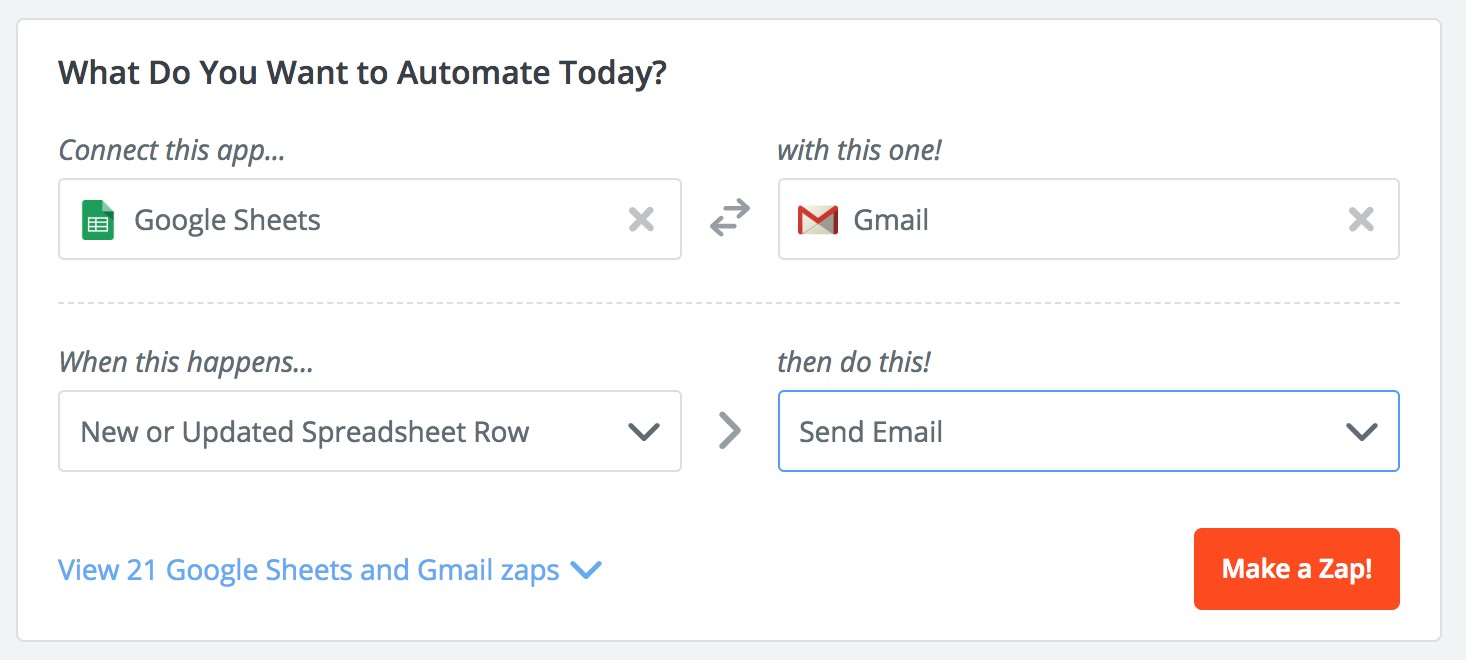
This is one possible flow that does not need a software developer. You do need to take the time to set it up and to monitor.
At Thematic, we can help customers automate aggregating feedback in one place, annotating of the comments with relevant themes, and setting up the closing the loop workflows.
Finally, not everyone leaves a comment. The right tools can still help you close the loop automatically for a good proportion of your customers without the noise and bias.
For instance, you could find customers similar to those who did leave feedback by identifying key attributes that churned vs. happy customers. You can then know what matters to different customer segments without them having to tell you. Start improving your customer journey, and keep your customers posted on what's new!
In summary, closing the loop is a critical step in monetizing your customer feedback strategy. The right strategy will help you improve customer loyalty metrics. It will also help you bring in new revenue. Make sure to make it easy for happy customers to spend more and spread the word among their friends.
Whether you are a small cupcake shop or a multi-billion dollar business, thinking about the specific touchpoint of receiving feedback and making the most of it should be on your agenda.
If a particular piece of feedback came from many customers or has broader relevance, consider closing the loop on a public forum in addition to individual follow-ups. This could be
It should say essentially, “You asked, we delivered.”
Publicly acknowledging popular feedback shows all customers (even those who didn’t speak up) that you’re listening.
For example, a mobile phone manufacturer might notice hundreds of customers asking for a certain camera feature. When they roll out a software update that adds the feature, they could publish a short article or social media post:
“We've heard your requests for a better low-light camera mode, and the latest update addresses this with our new NightSight feature.”
This not only closes the loop with those who requested it but also markets the improvement to potential customers.
A public feedback roadmap helps keep users informed as their suggestions move from idea to implementation.

Another effective tactic is to maintain a public product roadmap or changelog where customers can see the status of their feedback. Many SaaS companies, for instance, have a live roadmap on their website or in their community. They log requests as “Under Review,” “Planned,” “In Progress,” and “Released.”
When you push an update that addresses a popular request, mark it as “Done” or “Released” and notify the followers of that item.
Some companies allow users to vote on feature requests and then publicly tag those requests when shipped, often adding a comment like “Thanks to everyone who provided feedback on this feature – we’ve now implemented it in the latest release.”
By sharing progress transparently, you close the loop at scale. Every customer who took the time to vote or comment can visibly see that their feedback led to a concrete outcome.
Closing the loop doesn’t have to be the end of the conversation. In your follow-up, you can invite the customer to share how they feel about the change or if the solution works for them. This makes the feedback loop truly continuous.
For example, if you followed up with a customer to say you fixed a bug they reported, consider checking back a week later with a quick “How’s everything working now?” message. This follow-on step shows deep care for their experience.
It can also lead to valuable secondary feedback—maybe the fix solved their issue, but they have another idea to make the product even better. By keeping the dialogue open, you turn one piece of feedback into an ongoing exchange and signal that you’re always listening.
Just be careful not to pester customers; a single polite check-in is usually appreciated, whereas constant messages could feel intrusive.
Effective feedback follow-up often requires coordination across teams—customer service, product development, marketing, etc. Everyone should recognize the importance of closing the loop.
Train frontline support reps on how to respond when customers give feedback beyond just solving the immediate problem.
For example, a support agent who logs a customer’s feature request should have a system to get notified if that feature gets implemented later so they can reach back out.
Empower your employees with customer feedback loop templates and tools for follow-up, but also give them leeway to add a personal touch. Some organizations even establish “close the loop” goals, such as a KPI for support managers to personally follow up with X number of customers each month regarding feedback. Making it a team effort and priority ensures no feedback slips through without closure.
Technology is essential when you’re closing the customer feedback loop at scale. Especially if you’re receiving feedback from multiple channels — surveys, reviews, support tickets — you need tools that help you not just listen, but respond meaningfully and efficiently.
Here’s how companies are making that happen:
Solutions like Medallia and Clarabridge (now Alchemer) offer closed-loop feedback features out of the box. They allow you to collect feedback across channels, assign tickets or alerts for follow-up, and track whether a response was sent.
In fact, many will let you automate an initial follow-up email and set reminders for your team to do the personal outreach.
When you're dealing with thousands of open-ended responses, spreadsheets won’t cut it. This is where text analytics tools like Thematic come in—using natural language processing techniques, large language models, and generative AI capabilities with human-in-the-loop to make sense of qualitative feedback at scale.
Here’s what it looks like with AI used in qualitative data analysis:
Some companies are even starting to use AI-generated draft responses to speed up the follow-up process. A support manager could take that AI-generated email, tweak it, and get back to the customer faster than ever. The result? A more scalable, responsive feedback loop—without sacrificing personalization.
Often, closing the loop fails simply because feedback falls through the cracks between systems. Integrating your feedback channels with your CRM or helpdesk can solve this.
For example, if a customer leaves a low NPS score with a comment, an integration could automatically open a ticket in Zendesk or Salesforce for a support rep to follow up.
Modern CRM systems are beginning to include voice-of-customer tracking. Funneling all feedback into one place with customer histories gives your team full context when reaching out. They might see that this customer reported an issue last month, which was fixed in the latest update – all the info needed to craft a meaningful “we fixed it” email is at their fingertips.
As mentioned earlier, having a public portal for feedback (like UserVoice, Canny, or even a dedicated forum) can facilitate loop closure on a community scale. Users can upvote ideas and get notified of status changes.
Tools like Trello or Jira (with public roadmap add-ons) let you share progress externally without revealing sensitive internal details.
When you drag a card to “Done” on a public board, everyone watching that card knows the loop is closed. These tools turn your customers into partners in the product development journey, boosting engagement and goodwill.
Timely responses matter. Setting up alerts and escalation workflows helps your team move quickly when a customer reaches out.
For instance:
This keeps your feedback loop running smoothly — and lets you close it before the customer loses confidence.
How do you know if your efforts to close the loop are working?
Just as you would track customer feedback itself, you should track metrics around your follow-up process and its outcomes. Here are some key ways to measure the impact:
Start by measuring the percentage of feedback that gets a follow-up.
For example, if 500 customers provided feedback this quarter (through surveys, support, etc.), in how many cases did someone from your company actually reach back out to the customer to close the loop?
If that rate is low, it’s an opportunity to improve your process. Many companies strive for a 100% closed-loop rate on actionable feedback, especially for negative comments.
Track the average time between a customer giving feedback and your follow-up. Faster is better – remember that companies closing the loop within 48 hours saw significant NPS lifts. You can set targets (e.g. respond to all dissatisfied customers within 24 hours) and monitor performance against them.
Use surveys to gauge if customers are happier after the loop is closed.
For instance, after you follow up and resolve an issue, you might send a quick CSAT survey like “How satisfied are you with how we handled your feedback?”
Many companies see their overall NPS or CSAT scores rise as their closed-loop system matures. You can attribute improvements in loyalty metrics partly to your closed-loop actions.
Feedback doesn’t just impact satisfaction — it influences whether customers stick around or leave.
Customers who receive a follow-up after giving feedback are often more likely to renew, upgrade, or make additional purchases. That’s why closing the loop isn’t just about good manners — it’s about retention.
There’s a clear link between the customer feedback loop and predicting customer churn. Companies that consistently close the loop tend to see lower churn rates year over year. In contrast, silence after feedback can send the message that their input doesn’t matter — and that’s a fast track to losing them.
If you have the data, compare two segments:
Their renewal rates, spend levels, or churn patterns will often reveal the ROI of closing the loop in very real business terms.
As your company builds a reputation for listening, you may notice more customers willing to share feedback. Monitor if survey response rates climb over time—that 21% uptick in response likelihood when people know you close the loop can be directly observed.
Similarly, you might see an increase in unsolicited feedback (more users posting ideas or issues) once word gets around that your company actually responds and acts.
Don’t forget anecdotal evidence. Keep an eye out for customers mentioning (in reviews or social media) that “Company X really listens” or giving positive comments about your follow-up. These stories can be as telling as the numbers.
Some companies even track the number of public compliments or shoutouts they get after successfully resolving customer feedback.
For example, a customer might tweet, “Shoutout to ABC Co – I suggested an improvement and they not only replied, they actually made the change! 💯”. That’s gold!
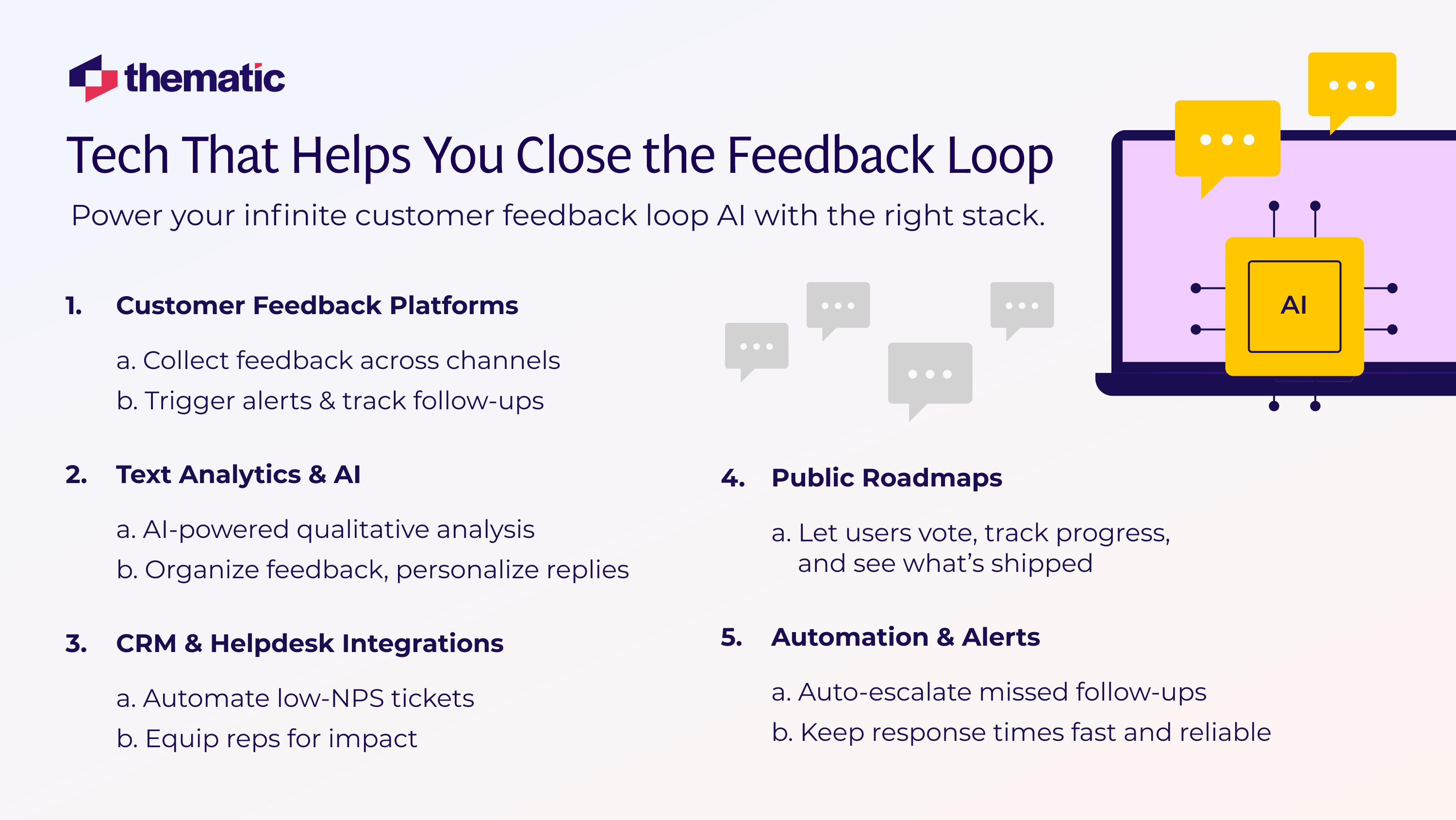
We’ve covered the how-tos and whys – now let’s summarize some customer feedback loop best practices in closing the loop to turn your process into a complete closed-loop feedback system.
My friend Ann-Margaret used to be an accountant.

She now owns a cupcake shop which is incredibly successful. There are customers who visit her each week. I was one of them, when my daughter Maya went to a Saturday school next door. We told Ann-Margret how much we love her cupcakes and she shared that she also bakes for birthdays and functions. Next time I ran an event, I ordered 250 cupcakes from her store.
This process shouldn’t be different for a large company that receives thousands or hundred thousands of positive feedback pieces each year.
Instead of “Thank you for your feedback”, how can you make it easy for a happy customer to buy more? Why not send a personalized offer, mentioning specifically what the customer said?
For example, if someone leaves a comment saying, “Your new website is amazing!”, you could respond:
Make it easy to spend more with you! Make it easy to spread the word on social media about the great services you provide.
Use personalized message that features specific things that customers mentioned in their feedback. Makes it clear that you have listened to both positive and negative feedback. This will create a mini-dialogue and builds a long-term customer relationship.
You've seen the charts above! Analysis of feedback data shows that there is a clear link between what people say and what they do.
But customers might mention pain points in an indirect way. For example, they might talk about customer loyalty in this sentiment. “I’ve been a customer for twenty years, but you only give great deals to new customers”.
Customers want to feel valued. If they don’t, they are likely to switch to a competitor offering them a better deal.
Let’s go back to that churn example. Looking at specific things people are talking about regardless of score can help us prevent churn.
Every feedback survey has certain recurrent themes that are linked to higher churn. Here is a slightly redacted example from the same dataset we used above.
You can see an overview of themes by their impact on churn. When people want improvements in delivery, they are less likely to churn. Same goes for the experience with the call center. When they mention customer loyalty, cancelling the service and issues with payment, the impact is positive. This means that they are more likely to churn.
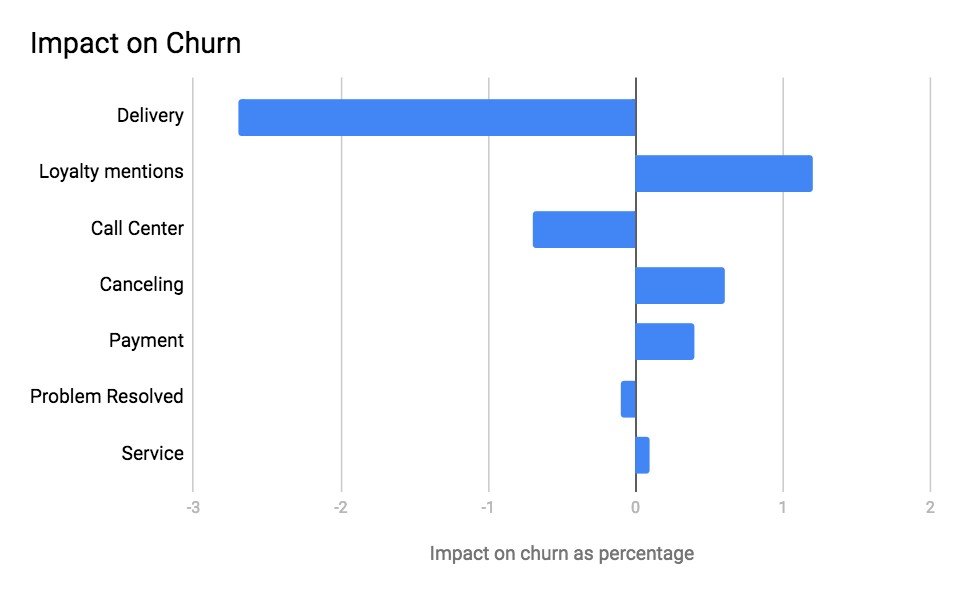
By analysing past data and knowing which themes are highly linked to churn, companies can:
If a customer indicates that they aren’t valued as a customer, take the opportunity to show to a customer that you appreciate their loyalty and offer some sort of loyalty reward.
After all, it’s only fair.
Or, let's use another example. If someone says the website is very difficult to use, respond by showing how you prioritize this feedback in product development. It could be an email describing new features that will address these issues. Don’t just show that you are listening and this feedback is valuable, but also get the customer excited about what’s next in store!
This is what a meaningful feedback loop process looks like.
Positive feedback can also be used in a meaningful way. Imagine a customer, let’s call him Adam, has said: “I love your weekly deals section”. A powerful way of closing the loop would be to acknowledge this by saying:

You can achieve multiple benefits with a message like this, such as:
So don't just collect customer feedback! Use it to build more customer loyalty, get referrals and ideally new customers too!
As a recent study notes “Organizations that operationalize feedback as a strategic input see measurable improvements in user satisfaction and retention.”
Closing the customer feedback loop is not just a nice-to-have—it has a significant impact on your business. Following up shows customers you act on their concerns. And it pays off with
Whether you receive 100 pieces of feedback or 10,000, closing the loop is possible with the right processes, empowered teams, and tools like CRM integrations or AI-driven platforms such as Thematic.
Even small actions—a quick follow-up email or a thank-you message—can signal that you care. Over time, those moments build a reputation for responsiveness.
If you’re ready to take your feedback process to the next level, try Thematic now to see how it can help you close the loop more effectively.
Because when you close the loop, you open the door to lasting customer loyalty.
Even if you can’t follow up one-on-one, you can still close the loop at scale. Use release notes, blog posts, newsletters, or public changelogs to show what’s been done based on customer input. For example: “We received a lot of feedback about checkout issues, and we’ve just launched an update to streamline the process.”
Be transparent. Closing the loop doesn’t always mean you’ve implemented the suggestion — it means you’ve acknowledged it. Let customers know their feedback is valued, even if it’s not currently on the roadmap. A simple “We’ve shared this with the team for future consideration” goes a long way.
Use automation and smart routing to lighten the load. Set up workflows that flag actionable feedback for follow-up, and draft response templates your team can personalize quickly. AI-driven platforms can also help categorize and prioritize feedback efficiently.
Absolutely. Letting customers know you appreciate their praise reinforces the relationship and increases loyalty. It’s also a great opportunity to invite them to become brand advocates — leave a review, share a testimonial, or participate in a case study.
Join the newsletter to receive the latest updates in your inbox.